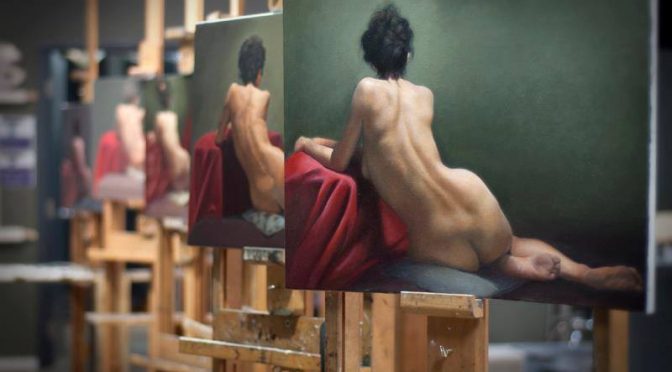© Uriél Dana 2017
When I began my painting career artists did not have the luxury of the Internet. We sent slides to galleries and publishers, waiting weeks for our precious and expensive images to be returned in our self addressed and stamped return envelopes.
Women artists were not welcomed as they are today. Luckily, few knew if I was a male or female by my first name. It was a great advantage. By the time my work was accepted, galleries could not decline the art if they discovered I was a woman. It may seem ridiculous, but they were different times.
There has always been an underlying and widespread belief that women were not as good as men in the arts or there would be more of them in the history books. People often mistake the lack of visibility of women in the arts with women not being great artists.
Only now with restoration techniques and the global access of diligent art historians are we finding treasures created by women in the vaults of museums and churches. We are learning just how many creations of famous artists were in fact made by their wives and daughters. It is even believed that the ancient cave paintings around the world were likely painted by women.
Women in the past were rarely allowed to train in the arts. They were allowed to do pottery, weaving, and textile arts such as needlepoint but they were limited to still lifes or florals. They were also allowed to “create for love”, the original meaning of the world amateur.
These restrictions were because women were not allowed to look at the human body. (This was also a hurdle with women trying to become medical doctors). Drawing a man’s genitalia would quite literally make her an outcast for life.
When tight boundaries for women are removed they excel in all of the arts. Artemisia Gentileschi, the daughter of a painter, became the first woman member of the Accademia dell’Arte. (Unfortunately, she did so before her artist husband. We can imagine how much fun that was…)
Elisabeth Vigée LeBrun was the daughter of two artists and had royal patronage by the time she was 14. She painted royalty across Europe and Russia but became most known for painting Marie Antoinette and the French aristocracy. It was no picnic. She complains in her autobiography about having to work like a slave to pay for herself, her daughter, her teachers, the maid, a domestic, a carriage, a cook, a household, travel expenses and a husband fond of fancy dress.
In Holland, Judith Leyster was only allowed to study painting after her banker father went bankrupt. She not only bailed her father out financially with her talent, but she supported her whole family. To add insult to injury nearly every painting she did was misattributed to Frans Hals. The list goes on and on.
I was very fortunate to have an extended apprenticeship with one of the six originators of what came to known as California Visionary Art. Years later I married him. However, much like Elizabeth Gardner Bouguereau, I had established my own art career before risking being in the shadow of another. Owning our own voice as an artist will keep us out of the shadows. We have the pens, the pencils, and the brushes to draw our own boundaries when it comes to being a woman in the arts.
Boundaries are rarely designed with a straight edge; they have nooks and crannies and soft areas. Each time I was able to get my foot in the door as a woman I left a shoe there to keep it open for another. Artists, male and female, need to nurture one another, not compete. Creativity does not flourish with a closed heart or mind.
It is said, “Ginger Rogers did everything Fred Astaire did but backwards and in high heals”. Being a woman artist in the 21st century is very much the same.
——————————————
Featured Image: Academy of Realist Art (ARA), Toronto, Canada.

